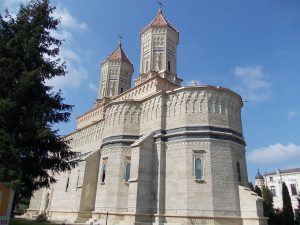Iasi is one of the oldest and most important settlements in Romania, being the political, economic and cultural centre of the province of Moldavia. Located in the northeastern part of the country, near the border with the Republic of Moldova, Iasi was for many centuries the crossing point of the most important commercial routes linking Poland, Hungary, Russia and Constantinople. The city was the capital of the Principality of Moldavia from 1564 to 1859, then one of the two capitals of the United Principalities from 1859 to 1862, and the capital of Romania from 1916 to 1918.

Even though it is mentioned for the first time in a document in 1408, archaeological investigations shown the presence of human communities on the present territory of the city and around it as far back as the prehistoric age. The document is a grant of certain commercial privileges by the Moldavian Prince Alexander to the Polish merchants of Lvov. Previous settlements include those of the Cucuteni-Trypillian culture, a late Neolithic archaeological culture.
Around 1564, the Moldavian capital has been moved from Suceava to Iași by Prince Alexandru Lăpușneanu. In 1640, Vasile Lupu established the first school in which the romanian language replaced Greek, and set up a printing press in the Monastery of the Three Hierarchs; built 1635. In 1643, the first volume ever printed in Moldavia was issued in Iași.
The city was burned down by the Tatars in 1513, by the Ottomans in 1538, and by Imperial Russian troops in 1686. In the XVI-th and XVII-th century the city known an important economic growth.
The city played an important role in building the modern romanian state! In 1848 here started the bourgeois revolution and the unification of Moldavia and Muntenia in 1959. Between 1564 and 1859, the city was the capital of Moldavia; then, between 1859 and 1862, both Iași and Bucharest were de facto capitals of the United Principalities of Moldavia and Wallachia. In 1862, when the union of the two principalities was recognized under the name of Romania, the national capital was established in Bucharest. During World War I, Iași was the capital of a severely reduced Romania for two years, following the Central Powers’ occupation of Bucharest on 6 December 1916.
